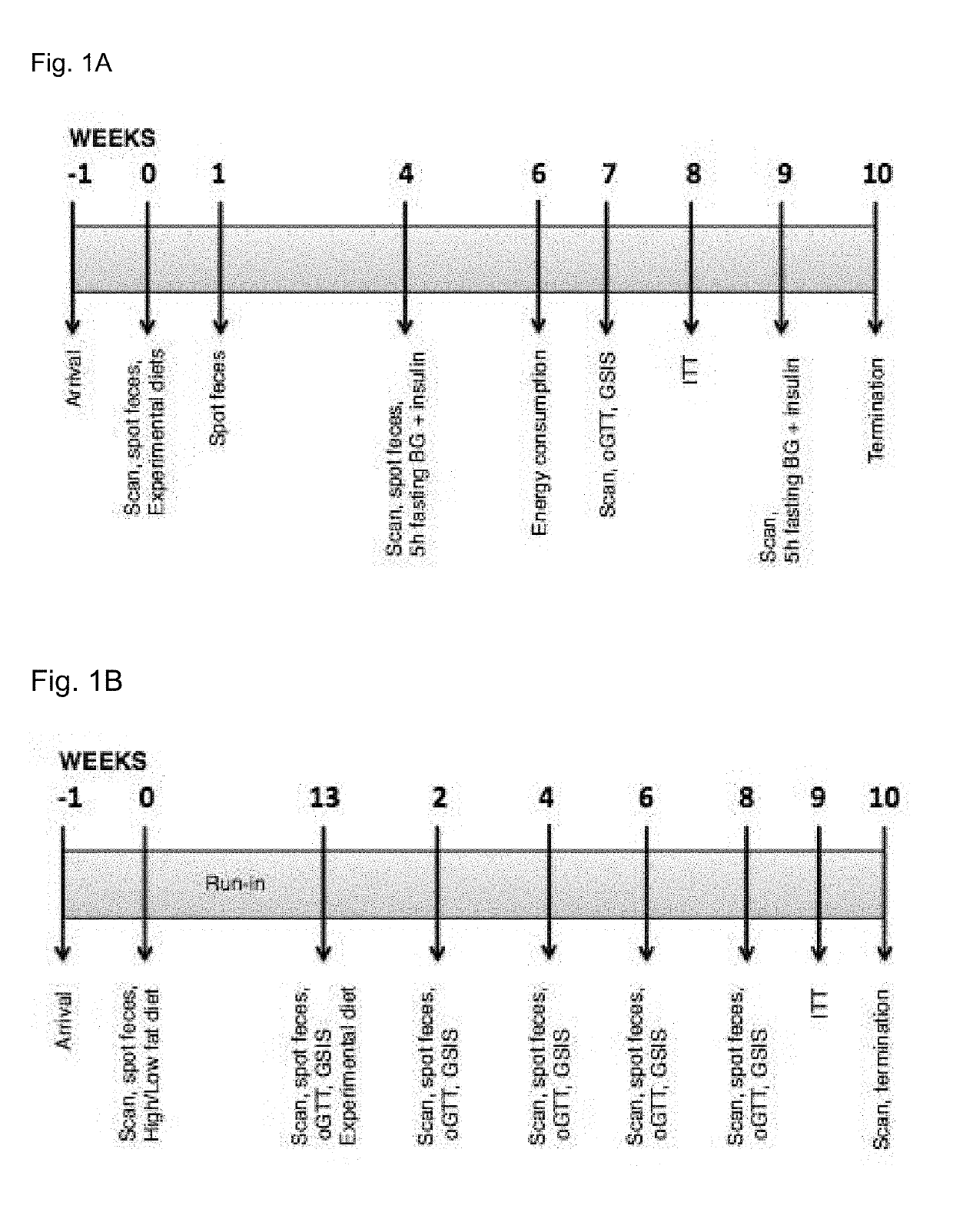Methods for modulating intestinal microbiota
a microbiota and intestinal microbiota technology, applied in the field of intestinal microbiota modulation, can solve the problems of increased risk of infection, decreased adipose tissue size and function, and common denominator of intestinal health, so as to reduce the risk
- Summary
- Abstract
- Description
- Claims
- Application Information
AI Technical Summary
Benefits of technology
Problems solved by technology
Method used
Image
Examples
example 1
[0247]Modulation of gut microbiota and prevention ofgut inflammation and metabolic syndrome by prophylactic treatment with defensins.
[0248]Materials and Methods
[0249]Mice: Mice were housed in trios, 4 cages per group. Feed intake was registered daily just before lights were turned off (6 pm). Individual mice were subjected to experimental procedures in altered order both group and cage wise. Mice were kept at room temperature under a 12-hour light / dark cycle at SPF standard conditions.
[0250]Diets: For dosing, the average weight was estimated to be 25 grams per mouse. They eat approximately 3 grams of feed per mouse per day.
[0251]Treatment regime (FIG. 1A): Mice were fed either a high fat diet (HFD) or a low fat (LF) control diet. The HFD contains 4 subgroups; 1 hBD2, 1 HD5, 1 hBD2 / HD5 and 1 standard HFD without supplementation of defensins. Defensin concentration is 1,2mg hBD2 per kg mouse per day. HD5 is given in equimolar concentration to hBD2. The combinatory group is given 50% h...
example 2
[0287]Modulation of Gut Microbiota by Defensins.
[0288]Invertebrates: For in vivo proof of concept one may employ the invertebrate wax moth model Galleria mellonella (G. mellonella). Faeces can be analysed after forced-feed administration of α- and / or β-defensins (Giannouli et al. 2014)(Favre-Godal et al. 2014).
example 3
[0289]Modulation of gut microbiota, gut inflammation and metabolic syndrome parameters by interventional treatment with defensins in obese mice.
[0290]Mice and diets. The experiment elucidates the effect of hBD-2 and HD5 in the treatment of metabolic syndrome (MetS) in diet-induced obese mice. A run-in period of 13 weeks where mice were fed a very HFD (60% energy from fat) preceded the intervention. Only mice meeting the criteria of a minimum of 12 gram weight gain (approximately 50% of initial bodyweight) during the run-in period were included in the final analyses. Mice that did not meet these criteria stayed in their respective cages as hierarchy ‘keepers’. They were exposed to all experimental tests, but excluded from the analyses.
[0291]Treatment regimen (FIG. 1B). Before the intervention all mice were MR scanned and an OGTT was performed. Cages of mice were allocated to experimental groups based on their fat mass. All subsequent measures were paired with data from the same mouse...
PUM
| Property | Measurement | Unit |
|---|---|---|
| Dimensionless property | aaaaa | aaaaa |
| Dimensionless property | aaaaa | aaaaa |
| Dimensionless property | aaaaa | aaaaa |
Abstract
Description
Claims
Application Information
 Login to View More
Login to View More - R&D
- Intellectual Property
- Life Sciences
- Materials
- Tech Scout
- Unparalleled Data Quality
- Higher Quality Content
- 60% Fewer Hallucinations
Browse by: Latest US Patents, China's latest patents, Technical Efficacy Thesaurus, Application Domain, Technology Topic, Popular Technical Reports.
© 2025 PatSnap. All rights reserved.Legal|Privacy policy|Modern Slavery Act Transparency Statement|Sitemap|About US| Contact US: help@patsnap.com



